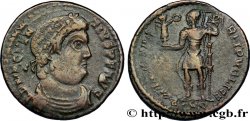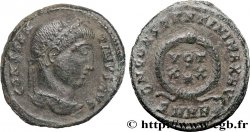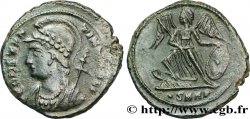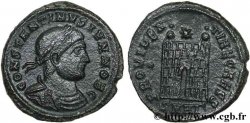bga_336536 - HISPANIA - VLIA (Province of Cordoue) Unité de bronze ou as, (GB, Æ 31)
280.00 €
Quantità
Aggiungi al carrello

Tipo : Unité de bronze ou as, (GB, Æ 31)
Data: IIe siècle avant J.-C.
Nome della officina / città: Ulia
Metallo : bronzo
Diametro : 31,5 mm
Asse di coniazione : 9 h.
Peso : 23,18 g.
Grado di rarità : R1
Commenti sullo stato di conservazione:
Bronze de qualité sur un flan large et épais, avec un avers très légèrement décentré mais complet. Revers un peu mou. Patine sombre et brillante
N° nelle opere di riferimento :
Diritto
Titolatura diritto : ANÉPIGRAPHE.
Descrittivo diritto : Tête féminine diadémée à droite, avec un petit chignon ; devant, un épi de blé ; au-dessous, un croissant.
Rovescio
Titolatura rovescio : VLIA.
Descrittivo rovescio : dans un cartouche végétal entouré de branches de vigne (?).
Commento
L. Villaronga date ce type de la première moitié du IIe siècle avant J.-C. Le monnayage se limite à des unités de bronze dont le poids moyen est supérieur à 20,00 g. Le lien stylistique au niveau du droit avec Obulco est avéré et confirmé par Villaronga.
Cet exemplaire a un avers intéressant avec un beau petit gènetis ; la taille du coin de droit est très inférieure à celle du flan.
L. Villaronga dates this type to the first half of the 2nd century BC. Coinage is limited to bronze units whose average weight is greater than 20.00 g. The stylistic link at the legal level with Obulco is proven and confirmed by Villaronga. This example has an interesting obverse with a beautiful little genetis; the size of the obverse die is much smaller than that of the blank
Cet exemplaire a un avers intéressant avec un beau petit gènetis ; la taille du coin de droit est très inférieure à celle du flan.
L. Villaronga dates this type to the first half of the 2nd century BC. Coinage is limited to bronze units whose average weight is greater than 20.00 g. The stylistic link at the legal level with Obulco is proven and confirmed by Villaronga. This example has an interesting obverse with a beautiful little genetis; the size of the obverse die is much smaller than that of the blank







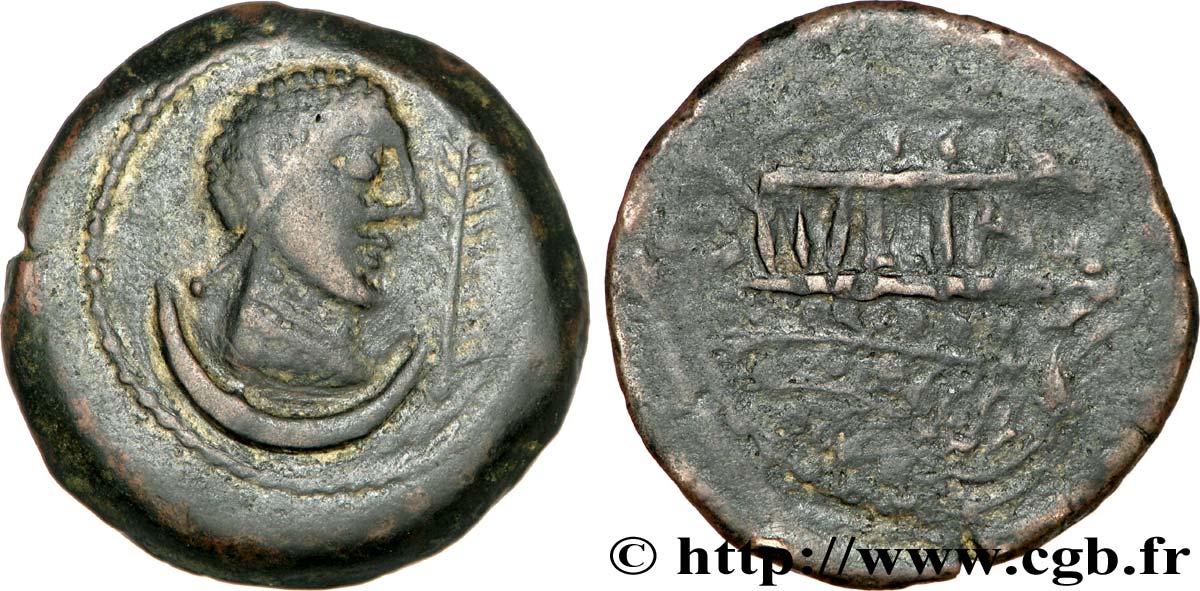
 Segnalare un errore
Segnalare un errore Stampate la pagina
Stampate la pagina Condividi mia selezione
Condividi mia selezione Fai una domanda
Fai una domanda Consegnare / vendere
Consegnare / vendere
